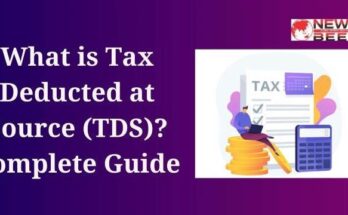In the interconnected world of global finance, the seamless transfer of money across international borders is a fundamental necessity for individuals, businesses, and governments alike. One of the critical components that facilitate these transactions is the SWIFT code. This unique identifier plays a crucial role in ensuring that money sent from one country to another reaches its intended destination accurately and efficiently. This essay delves into the intricacies of the SWIFT code, exploring its structure, purpose, and significance in the global financial system.
Table of Contents
ToggleWhat is a SWIFT Code?
A SWIFT code, also known as a Bank Identifier Code (BIC), is a standard format for Business Identifier Codes (BIC). It is used to uniquely identify banks and other financial institutions globally. The term SWIFT is an acronym for the Society for Worldwide Interbank Financial Telecommunication, an organization that provides a network enabling financial institutions to send and receive information about financial transactions in a secure, standardized, and reliable environment.
Structure of a SWIFT Code
A SWIFT code consists of either 8 or 11 characters. Each segment of the SWIFT code carries specific information that helps in identifying the institution involved in the transaction. The structure is as follows:
- Bank Code (4 characters): This part consists of four letters that represent the bank’s name. It usually resembles a shortened version of the bank’s name and is used to identify the specific bank.
- Country Code (2 characters): These two letters denote the country where the bank is located, following the ISO 3166-1 alpha-2 standard. For example, “US” for the United States, “GB” for the United Kingdom, and “IN” for India.
- Location Code (2 characters): This segment can be composed of letters or digits. It specifies the location of the bank’s head office. In some cases, it may include additional information about the branch or department.
- Branch Code (3 characters): This part is optional and comprises three characters that can be either letters or digits. It identifies a particular branch of the bank. If this segment is omitted, it usually implies the main office of the bank.
Example of a SWIFT Code
To illustrate, let’s break down the SWIFT code “BOFAUS3NXXX”:
- “BOFA” stands for Bank of America.
- “US” denotes that the bank is located in the United States.
- “3N” specifies the location of the bank’s head office.
- “XXX” indicates the main office or can be omitted.
Purpose and Significance of SWIFT Codes
Facilitating International Transactions
The primary purpose of SWIFT codes is to enable the accurate and efficient execution of international financial transactions. When an individual or business initiates a wire transfer to a foreign account, the SWIFT code ensures that the funds are routed to the correct financial institution and branch. This precision is vital for the smooth functioning of the global financial system, preventing errors that could lead to delays or losses.
Enhancing Security and Reliability
SWIFT codes also play a crucial role in enhancing the security and reliability of financial transactions. The SWIFT network provides a standardized communication system that allows financial institutions to exchange information securely. Each transaction is authenticated and encrypted, minimizing the risk of fraud and ensuring the integrity of the data being transmitted.
Supporting Global Trade
In the context of global trade, SWIFT codes are indispensable. Businesses engaged in international trade rely on these codes to process payments for goods and services efficiently. The ability to transfer funds quickly and accurately across borders facilitates smooth business operations and helps maintain trust between trading partners.
SWIFT Network and Its Role
The SWIFT network is a vast messaging system that connects over 11,000 financial institutions in more than 200 countries. It handles millions of messages daily, encompassing a wide range of financial transactions, including payments, securities, treasury, and trade.
Key Functions of the SWIFT Network
- Payment Orders: SWIFT codes are used in various types of payment orders, including customer transfers, bank-to-bank transfers, and checks.
- Securities Transactions: The network facilitates the transfer of securities, including stocks, bonds, and other financial instruments, ensuring that transactions are completed accurately and securely.
- Treasury Transactions: SWIFT codes are utilized in treasury operations such as foreign exchange and money market transactions.
- Trade Services: The network supports trade-related messages, including letters of credit, guarantees, and bills of lading.
History and Evolution of SWIFT
Origins and Establishment
The idea for SWIFT was conceived in the early 1970s by a group of major international banks. They recognized the need for a standardized and secure method of communication to replace the unreliable and slow telex system. In 1973, the Society for Worldwide Interbank Financial Telecommunication was founded, and the SWIFT network became operational in 1977 with 239 banks in 15 countries.
Technological Advancements
Since its inception, SWIFT has undergone significant technological advancements. The organization continually updates its systems to incorporate new technologies and enhance security measures. For example, the introduction of SWIFTNet in the early 2000s marked a significant upgrade, providing a more robust and flexible messaging platform.
Expansion and Global Reach
Over the decades, SWIFT has expanded its reach, connecting thousands of financial institutions worldwide. Its influence has grown to encompass not only banks but also corporations, market infrastructures, and securities institutions. This extensive network has made SWIFT a cornerstone of the global financial system.
SWIFT Codes vs. IBAN
While SWIFT codes are essential for international transactions, they are often used in conjunction with another identifier: the International Bank Account Number (IBAN). The IBAN is a standardized format for identifying bank accounts across borders.
Key Differences
- Purpose: SWIFT codes identify the financial institution involved in a transaction, while IBANs identify the specific account within that institution.
- Structure: An IBAN consists of up to 34 alphanumeric characters, including a country code, check digits, and the domestic bank account number. In contrast, a SWIFT code is 8 or 11 characters long.
- Usage: SWIFT codes are used globally, whereas IBANs are primarily used in Europe and other regions that have adopted the IBAN standard.
Regulatory and Compliance Aspects
In the realm of international finance, compliance with regulations is paramount. SWIFT codes are subject to various regulatory frameworks to ensure they are used appropriately and securely.
Anti-Money Laundering (AML)
Financial institutions use SWIFT codes as part of their AML procedures. By accurately identifying the banks involved in transactions, institutions can better monitor and detect suspicious activities.
Know Your Customer (KYC)
SWIFT codes also play a role in KYC processes. They help verify the identity of the institutions involved in transactions, ensuring that banks are dealing with legitimate entities.
Challenges and Future Prospects
Cybersecurity Concerns
Despite the robust security measures in place, the SWIFT network is not immune to cyber threats. High-profile cyberattacks in recent years have highlighted the need for continuous vigilance and improvement in security protocols.
Technological Advancements
As technology evolves, so too does the potential for innovation within the SWIFT network. Blockchain and distributed ledger technologies, for instance, offer opportunities for enhancing the efficiency and security of financial transactions. SWIFT is actively exploring these technologies to stay ahead of the curve.
Competition from Emerging Technologies
SWIFT faces competition from emerging financial technologies and platforms that offer alternative methods for transferring money internationally. Fintech companies and cryptocurrencies present both challenges and opportunities for the traditional SWIFT network.
You May Also Read:
What is Digital Marketing in Hindi
SEO Interview Questions and Answers
Conclusion
In conclusion, the SWIFT code is a fundamental component of the global financial system, facilitating the secure and efficient transfer of funds across international borders. Its structured format ensures precision in identifying financial institutions, thereby supporting a wide range of financial transactions. The SWIFT network’s role in enhancing security, reliability, and efficiency in global finance cannot be overstated. As the financial landscape continues to evolve, SWIFT will need to adapt and innovate to maintain its pivotal position in the world of international banking. Despite challenges such as cybersecurity threats and competition from new technologies, the SWIFT code remains an indispensable tool in the seamless functioning of the global economy.
FAQs:
Q1: What is a SWIFT code?
A1: A SWIFT code, also known as a BIC (Bank Identifier Code), is a unique identifier used to specify a particular bank or financial institution in international transactions. It is used to ensure that the money is transferred to the correct bank.
Q2: What does a SWIFT code look like?
A2: A SWIFT code typically consists of 8 or 11 characters:
- First 4 characters: Bank code (only letters)
- Next 2 characters: Country code (only letters)
- Next 2 characters: Location code (letters and digits)
- Last 3 characters (optional): Branch code (letters and digits)
Q3: How is a SWIFT code different from an IBAN?
A3: A SWIFT code identifies a specific bank in international transactions, while an IBAN (International Bank Account Number) identifies an individual bank account within that bank. The SWIFT code ensures the money goes to the right bank, and the IBAN ensures it goes to the correct account within that bank.
Q4: Where can I find my bank’s SWIFT code?
A4: You can find your bank’s SWIFT code on your bank statements, on your bank’s website, or by contacting your bank directly. It is often listed in the bank’s international wire transfer instructions.
Q5: Do all banks have a SWIFT code?
A5: Not all banks have their own SWIFT code. Smaller banks or financial institutions might use a correspondent bank’s SWIFT code for international transactions.
Q6: Why do I need a SWIFT code?
A6: A SWIFT code is required when sending or receiving international wire transfers. It ensures that the money is routed correctly to the intended recipient’s bank.
Q7: Can a SWIFT code be used within a country?
A7: Typically, SWIFT codes are used for international transactions. For domestic transfers, other systems such as sort codes (in the UK), routing numbers (in the US), or BSB numbers (in Australia) are used.
Q8: What should I do if I entered the wrong SWIFT code?
A8: If you entered the wrong SWIFT code, you should contact your bank immediately to rectify the error. Incorrect SWIFT codes can delay transactions or result in funds being sent to the wrong bank.
Q9: How long does a SWIFT transfer take?
A9: SWIFT transfers usually take 1-5 business days to process, depending on the banks involved and the countries between which the transfer is taking place.
Q10: Is there a fee for using a SWIFT code?
A10: Yes, there is usually a fee for sending money using a SWIFT code. The fee can vary depending on the bank and the details of the transaction.
Q11: Can I use the same SWIFT code for all branches of a bank?
A11: Generally, a main SWIFT code can be used for all branches of a bank, but some banks have specific SWIFT codes for individual branches. It is best to confirm with your bank to ensure the correct code is used.
Q12: What happens if I don’t provide a SWIFT code for an international transfer?
A12: If a SWIFT code is not provided for an international transfer, the transaction may be delayed, incur additional fees, or even be rejected, resulting in the funds being returned to the sender.




